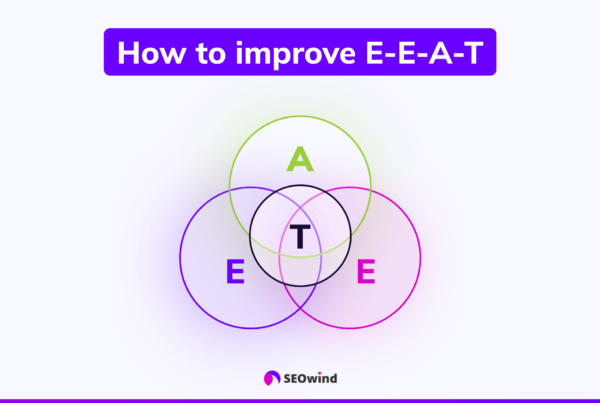Businesses always seek innovative strategies to gain an edge over their competition. One such powerful tactic is leveraging the power of blogging as a marketing tool. As you explore this comprehensive guide, you will understand how incorporating blogging into your marketing arsenal can yield incredible results and lead you to success.
So let’s dive in and uncover the world of blogging – from its fascinating origins and benefits to various ways it can be employed effectively for marketing purposes.
What is Blogging?
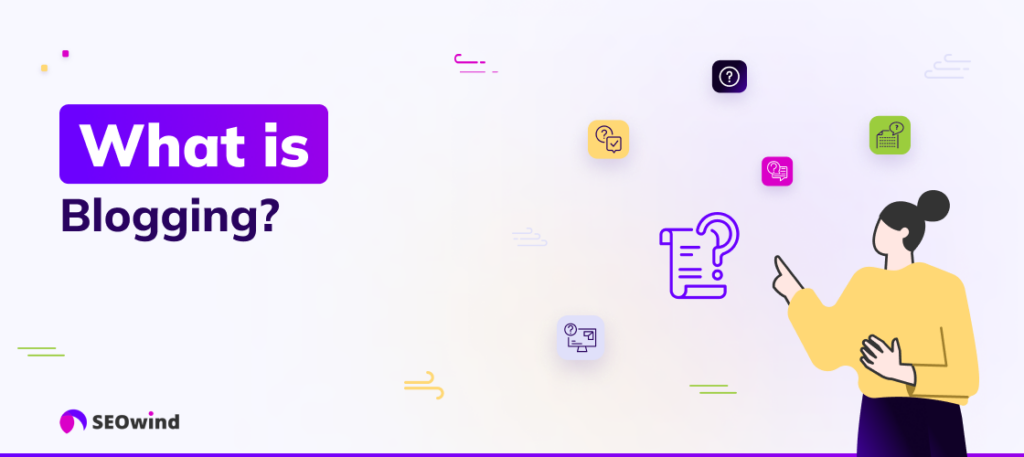
Before we delve into the intricacies of using blogs as a marketing tool, let’s first clarify what constitutes blogging.
Definition of Blogging
Blogging refers to regularly creating content and publishing content on a web-based platform known as a blog. The term “blog” itself is an amalgamation of “web” and “log,” which gives us insight into its original purpose: maintaining an online diary or journal where individuals shared updates about their personal lives or discussed topics they were passionate about. Over time, however, blogs have evolved to encompass diverse subject matter and serve various functions – from personal anecdotes and opinion pieces to industry insights and news analysis.
History of Blogging
While some argue that early examples of blogging could be traced back to the 1980s with community-driven platforms like The WELL (Whole Earth ‘Lectronic Link), most attribute the true birth of blogging to 1994 when Justin Hall started “Justin’s Links from the Underground.” This site allowed him to share his thoughts and opinions with his growing audience.
It wasn’t until 1997, when John Barger coined the term “weblog,” later shortened to “blog” by Peter Merholz in 1999, these written online expressions became widely recognized under one unifying name. The subsequent launch of free blogging platforms like Blogger (1999) and WordPress (2003) made it increasingly accessible for individuals to create their blogs, leading to an explosion in the blogosphere. Today, blogs are no longer restricted to just personal musings but have become a powerful marketing tool for businesses, influencers, writers, journalists, and anyone looking to share information with the world.
Blog as a Marketing Tool – Benefits of Blogging
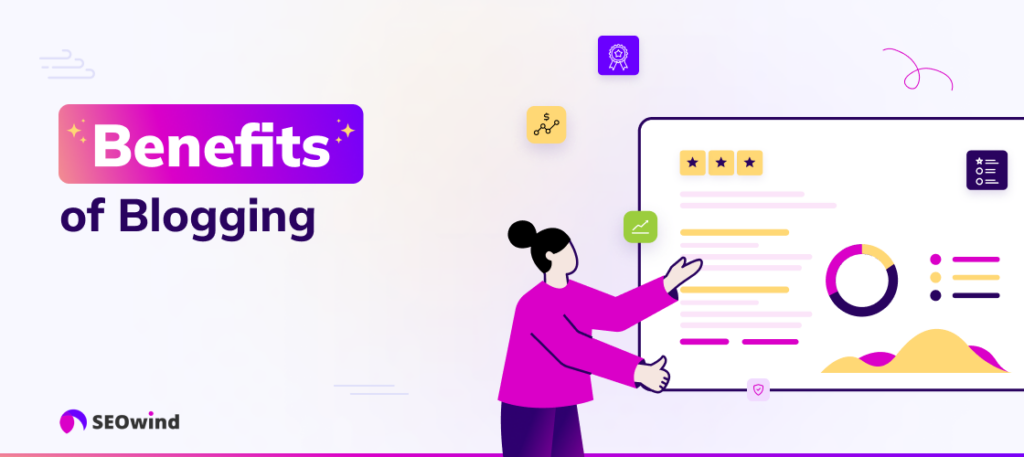
Utilizing a blog as a marketing tool has many advantages, from increased website traffic to lead generation. This section explores four key benefits of blogging for marketing purposes.
Increased Website Traffic
One of the primary goals of most online businesses is to drive higher volumes of web traffic. A well-crafted and regularly updated blog can help achieve this goal by:
- Attracting new visitors through engaging content that may be shared on social media or linked to other blogs and websites.
- Encouraging repeat visits from readers interested in your industry insights and expertise.
- Reinforcing your position as an authority within your niche can encourage others to reference your blog when discussing relevant topics.
As more people visit your site to read your blog posts, they will likely explore other pages, introducing them to various aspects of your business and potentially converting them into customers.
Improved SEO Ranking
Search engine optimization (SEO) is crucial in helping potential customers find you amidst millions of websites in search engine results. When you consistently publish valuable content on your blog, search engines like Google take notice and improve your ranking. Blogging contributes positively towards SEO by:
- Building a library of keyword-rich content that signals relevancy and authority to search engines.
- Encouraging natural backlinks from reputable sites that mention or reference your articles.
- Keeping the website frequently updated with fresh content is favored by both users and search algorithms alike.
With an improved SEO ranking, you increase organic visibility and attract more visitors searching for information about your products or services.
Brand Awareness
A well-maintained blog enables you to present an authentic voice and showcase thought leadership within your industry while highlighting essential elements that make your brand unique. Through regular blogging activities, you can build brand awareness and foster positive relationships with potential customers based on trustworthiness and expertise – values vital in today’s marketplace. Specifically, blogging builds brand awareness by:
- Humanizing your business as you give readers a peek behind the curtain of your operations and share stories that resonate with them emotionally.
- Showcasing products and services in an informative, non-sales manner that encourages interest and recognition.
- Promoting collaboration opportunities with influencers who may amplify your reach within industry circles.
Enhanced brand awareness results from meaningful connections established through authentic storytelling and thought leadership expressed via your blog posts.
Lead Generation
Blogs are efficient tools for businesses to convert organic traffic into sales leads. Including well-placed call-to-actions (CTAs) within the blog, content entices readers to engage further with your business offerings – subscribe to a newsletter or download an eBook.
In essence, blogging facilitates lead generation by:
- Drawing targeted audiences through carefully crafted content addressing specific pain points or needs.
- Demonstrating how your product or service can offer viable solutions for their challenges.
- Nurturing prospects throughout the buyer journey using highly relevant and targeted information tailored for each stage of the sales funnel.
When done strategically, blogging is a powerful marketing tool that delivers measurable results in increased site traffic, heightened brand visibility, improved SEO rankings, and robust lead generation efforts — ready to transform casual browsers into loyal customers.
Types of Blogs
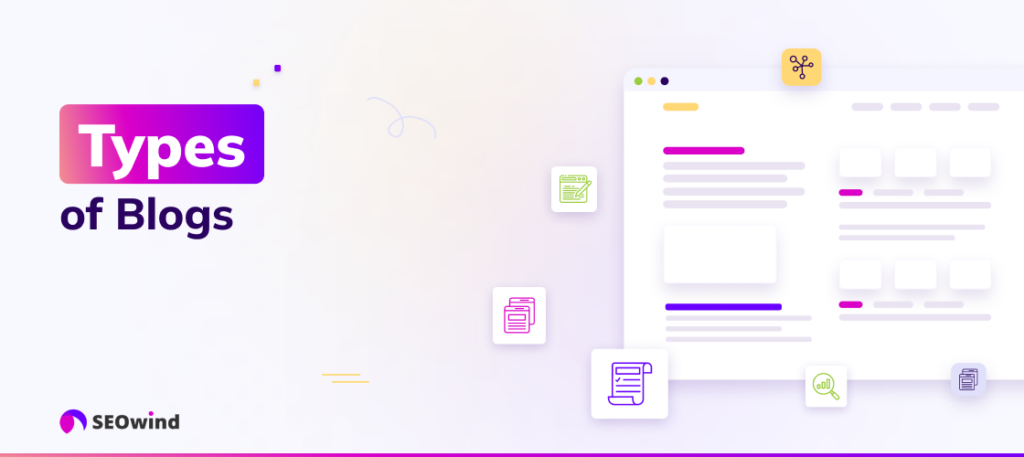
Before diving into blogging as a marketing tool, it’s essential to understand the different types of blogs. This knowledge will help you determine the type best suits your goals and needs. In this section, we’ll explore personal blogs, business blogs, and news/journalism blogs.
Personal Blogs
Personal blogs are typically created by individuals who aim to share their thoughts, experiences, hobbies, or daily life with others. These blogs often focus on specific niches like travel, food, fashion, or lifestyle stories. Personal bloggers usually aim to create a sense of community among their readership and build connections through shared interests. While personal blogging may not be directly utilized as a blog-as-marketing-tool method for businesses, they still offer valuable insights into audience engagement and creating relatable content. Furthermore, well-established personal bloggers can partner with brands via sponsored posts or collaborations in mutually beneficial ways.
Business Blogs
Business blogs are essential to blogging in marketing strategies for small to large corporations. They serve multiple purposes, like promoting products and services, sharing industry-related information, providing customer support resources and tips, and so much more. Some core benefits of business blogging include increased website traffic generation and lead production – crucial aspects when effectively utilizing blog-as-a-marketing-tool tactics.
Within the realm of business blogging:
- B2B (business-to-business) companies might create content geared toward other businesses in their industry.
- B2C (business-to-consumer) organizations could develop articles designed with end-users in mind.
The key to a successful business blog is producing high-quality content that offers value while showcasing expertise within a particular field or niche.
News/Journalism Blogs
News or journalism-centered blogs function by reporting updates on recent events either globally or within specific sectors, such as technology advancements or political developments. While some independent bloggers operate news blogs, established media organizations maintain their blogging platforms in addition to traditional print and broadcast journalism.
Using a news or journalism blog as a marketing tool might be an indirect approach; however, businesses can still leverage these platforms by staying current with trends and developments and identifying potential customer needs. Additionally, being featured in articles on reputable news blogs contributes to heightened brand awareness and business credibility.
To recap, understanding the different types of blogs helps showcase how blogging can function as a powerful marketing asset. Personal bloggers effectively communicate relatable messages that resonate with their target audience. Business blogs provide relevant industry insights and promote company products/services while attracting leads. Finally, news/journalism-based blogs offer opportunities to stay informed and make informed business decisions – making each type essential within its niche when leveraging blogging’s full potential as a marketing tool.
How can blogs be used as a marketing tool?
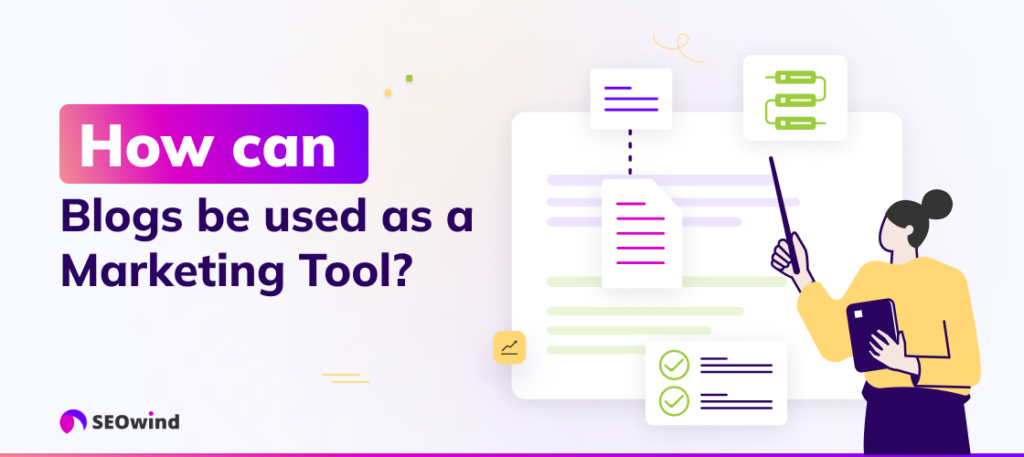
Blogs effectively engage with your target audience, drive traffic to your website, and ultimately promote your products or services. By leveraging informational content, storytelling elements, and strategic promotion efforts, you can optimize the power of blogging in marketing your brand. Here are several key methods for utilizing blogs as a marketing tool.
Share Valuable Information
One way to use blogging for marketing is to provide valuable information that addresses the needs and interests of your target audience. Creating insightful content lets your readers perceive you as a trusted expert in your industry. This credibility encourages repeat visits and facilitates word-of-mouth referrals when visitors share your resourceful blog posts within their personal and professional networks.
Tell Your Brand Story
Another essential aspect of using a blog as a marketing tool involves telling your authentic brand story. Share insights into your company’s values, commitment, mission, or journey through engaging narratives. Incorporating this emotional element fosters stronger connections between your brand and potential customers by humanizing it beyond mere products or services.
Leverage Search Engine Optimization (SEO)
Optimizing your blog’s content for search engines like Google should be at the core of any blogging marketing strategy. Conduct thorough keyword research. Employ relevant keywords throughout the text of each blog post to boost visibility within organic search results. Additionally, regularly updating informative content on blogs encourages increased indexing from search engine algorithms noting fresh material – all proving vital in improving SEO ranking.
Promote Through Social Media Channels
Social media platforms such as Facebook, Twitter, Instagram, and LinkedIn are invaluable channels through which bloggers can market their content effectively. Sharing blog posts via these platforms enlarges reach among social audiences – some may have never stumbled upon the associated website otherwise. Engaging captions accompanying shared links encourage active commenting discussions, further expanding overall outreach.
Collaborate with Influencers
Partnering with industry influencers can also bolster blogging marketing efforts. Inviting collaborators to write guest posts or conduct interviews provides their unique insights and perspectives. It exposes your blog to its established followers.
Overall, the potent combination of valuable content, brand narrative, SEO strategy, social media promotion, and strategic collaboration illustrates how blogs can be practical marketing tools for businesses across industries. By harnessing these methods in each blog post creation process – traffic growth, improved search engine ranking, and heightened brand awareness become resultant outcomes.
How to Start a Successful Blog

Starting a blog might seem overwhelming, but by breaking it down into manageable steps, you can create a successful marketing tool for your business. This section discusses the essential elements of setting up and launching your blog, ensuring it acts as an effective marketing channel.
Choose a Platform
The first step in setting up your blog as a marketing tool is selecting the right blogging platform. There are several options available, each with its unique features and capabilities. Some popular platforms include:
- WordPress.org: A self-hosted, highly customizable solution praised for its flexibility and extensive range of plugins.
- Wix.com: A user-friendly website builder appropriate for beginners, featuring drag-and-drop functionality.
- Blogger.com: Owned by Google, this free platform is easy to use and ideal for personal blogs or businesses starting their online presence.
- Medium.com: Ideal for thought-leadership content aiming to reach an existing community of readers.
When choosing your platform, consider cost, ease of use, customization options, and potential audience reach. Finding a solution that fits your technical skills and marketing needs is key.
Choose a Domain Name
Your domain name is the digital address of your blog on the internet. It should be memorable and reflect your brand identity while adhering to some basic guidelines:
- Keep it short and sweet
- Be easy to spell and pronounce
- Avoid numbers or hyphens
- Use relevant keywords related to your niche
It’s advisable to choose a domain with the “.com” extension since audiences perceive these addresses as more professional than alternatives like “.net” or “.org.” Several registrars offer domain registration services at different price points – remember to check renewal fees when comparing options.
Set Up Your Hosting
Once you have chosen your blogging platform and registered your domain name comes, web hosting. A web host offers the storage space and technical infrastructure needed to make your blog accessible online.
Select a reliable hosting provider that guarantees consistent uptime, fast page loading speeds, and scalable plans as your blog grows. Some well-known options include:
- Bluehost
- SiteGround
- HostGator
When assessing different providers, consider cost, customer support, ease of use with your chosen platform, and additional services like data backups and SSL certificates.
Design Your Website
An aesthetically appealing and user-friendly website is crucial for engaging visitors and driving conversions to your blog. Pay attention to the following elements while designing your site:
- Choose a theme: Pick a responsive design that reflects your brand identity while remaining visually attractive.
- Logical navigation: Ensure users can easily navigate your blog by creating clear menus and categories.
- Showcasing content: Use featured images, galleries, sliders, or other means to highlight important content prominently.
- Include necessary pages: Develop an attractive homepage alongside basics such as “About,” “Contact,” “Privacy Policy,” and dedicated landing pages for products or services if applicable.
By focusing on these fundamentals when starting your blog, you’ll create an effective marketing tool ready to expand visibility through engaging content promotion strategies – one step closer to fulfilling its potential as a powerful force in digital marketing strategy.
Blog Post Ideas

Creating engaging content is crucial for attracting readers and turning your blog into a powerful marketing tool. You want to provide value to your audience, help solve their problems, and showcase your expertise in your industry. Here are three effective types of content to include in your content strategy: product reviews, how-to guides, and interviews & Q&As.
Product Reviews
Product reviews offer an opportunity to educate blog readers about the features and benefits of products or services related to your business or industry. Incorporating product reviews can elevate the authority of your blog as a marketing tool. Be sure to:
- Choose relevant and popular products within your niche.
- Provide honest opinions with clear pros and cons.
- Use high-quality images or videos to demonstrate the product’s usage.
- Include affiliate links when applicable, offering an additional monetization option.
Writing thorough and genuine reviews can help establish trust among your audience while boosting engagement on your blog.
How To Articles and Guides
How-to articles educate readers on accomplishing tasks or mastering skills relative to their interests or challenges in your field of expertise. By providing practical solutions with step-by-step instructions, you position yourself as a knowledgeable source within the industry, reinforcing the power of blogs as a marketing tool. When creating how-to blog posts:
- Identify questions that potential customers frequently ask or issues they encounter.
- Provide detailed explanations that cater to beginners but offer enough depth for experienced individuals.
- Break down complex topics into smaller steps using bullet points, numbered lists, or other formatting techniques for easy understanding.
- Supplement content with visual aids such as infographics or video clips.
High-quality how-to guide posts give visitors actionable insights that keep them returning and prompt referrals from satisfied users who share their experiences with others.
Interviews & Q&A’s
Engaging experts through interviews and Q&A sessions is another way to solidify your blog’s position as a marketing tool. It allows you to showcase diverse perspectives, bring varied experiences and expertise into the conversation, and foster networking within the industry.
To create successful interview content:
- Identify respected professionals in your niche or those with unique viewpoints.
- Brainstorm compelling questions to spark insightful conversations on industry trends, challenges, or future developments.
- Keep interviews engaging through well-organized information flow, quotes or summaries to emphasize key points, and visual elements such as photos or videos when available.
Interviewing admired thought leaders adds credibility to your blog while providing valuable content that answers questions readers may be grappling with.
An influential blog requires high-quality content that resonates with its target audience. Providing product reviews, how-to guides, and interviews & Q&As will strengthen your blog’s impact as a marketing tool and build trust among your readership by showcasing relevant insights reflective of current market demands.
Blog Promotion Strategies
After understanding the potential of a successful blog as a marketing tool, it’s imperative to implement strategic promotion methods. These strategies aim to attract more readers and engage them with your content. Let’s dive into three effective promotion techniques that can be employed: Social Media Marketing, Email Marketing, and Search Engine Optimization.
Social Media Marketing
One of the most powerful ways to use blogging in marketing is by leveraging social media platforms. They enable you to reach a vast audience and foster engagement through likes, comments, and shares. Here are some actionable tips for promoting your blog on social media:
- Share your content on multiple platforms: Blog post links to your latest articles on platforms like Facebook, Twitter, LinkedIn, Pinterest, and Instagram to capture varied audiences.
- Optimize visuals and headlines: Create eye-catching images and headlines that encourage users to click through and read your article.
- Engage with your followers: Responding to comments or questions from readers can spark conversations around your content.
- Utilize hashtags strategically: Incorporate relevant hashtags within your posts. They will help increase visibility and reach.
Email Marketing
Email marketing remains a tried-and-true method for promoting blogs as a marketing tool. By delivering tailored content straight to subscribers’ inboxes, you’re maintaining consistent touchpoints while nurturing relationships. Here are some practical steps for executed email campaigns:
- Build an email list: Encourage visitors to join through signup forms on your website or during promotional events.
- Send out valuable newsletters regularly: Provide subscribers with helpful resources such as roundups of recent articles or curated industry news.
- Personalize emails with segmented lists: Divide recipients based on their behavior (e.g., frequent versus occasional readers) or interests for highly-targeted campaigns.
- Use clear Call-to-actions (CTAs): Direct subscribers toward desired actions – clicking links or sharing content – with engaging elements like buttons.
Search Engine Optimization (SEO)
For blogs to be effective marketing tools, they must meet search engine algorithms requirements. Employing SEO best practices increase the likelihood of your blog appearing at the top of organic search results. Here’s how to optimize:
- Use keywords strategically: Insert relevant terms naturally but frequently enough throughout your content – mainly in titles and headings.
- Write compelling meta descriptions: A captivating meta description, including target keywords, can significantly improve click-through rates.
- Link building: Earn external links from authoritative websites by creating link-worthy materials or engaging in outreach efforts like guest blogging.
- Focus on user experience: Design a user-friendly interface with easily digestible articles, attractive visuals, and logical navigation structures for an optimal overall experience.
As you advance with these promotion strategies, you must analyze their performance against predetermined objectives and make any necessary improvements. By sharpening your tactics through data-driven insights, you can ensure that leveraging a blog as a marketing tool bears desirable outcomes.
Monetizing Your Blog Content

As a content writer, I aim to give my readers value and insight on various topics. However, it’s also vital to understand the potential of blogs as marketing tools that can help generate income along the way. This section explores three primary methods to monetize your blog: advertising networks, affiliate marketing programs, and sponsored posts/reviews.
Advertising Networks
Participating in advertising networks is a popular method of making money through your blog. These platforms display third-party ads on your website that earn revenue based on views or clicks. Some well-known examples include Google AdSense and Media.net.
To get started with this approach:
- Sign up for an ad network account
- Add the necessary code snippets to your blog template
- Customize ad placement settings within your dashboard
Remember that high-quality content accompanied by substantial organic traffic increases the likelihood of generating considerable ad revenue.
Affiliate Marketing Programs
Another popular way to monetize your blog is by joining affiliate marketing programs offered by brands and online marketplaces. As an affiliate marketer, you promote products or services these companies provide with unique referral links embedded within your content or sidebar widgets.
When visitors click these links and complete a purchase or signup process, you receive a commission from the sale at no extra cost to them. Numerous organizations offer affiliate programs, such as Amazon Associates, ClickBank, CJ (formerly Commission Junction), and ShareASale.
To succeed with affiliate marketing:
- Join relevant programs catering to your niche and audience
- Use honest recommendations that resonate with readers’ interests
- Disclose affiliations following FTC guidelines on endorsement regulations
Remember not to let monetary gain hinder user experience—only suggest genuinely helpful resources best suited for their needs.
Sponsored Blog Posts and Reviews
Lastly, accepting sponsored posts or reviews is another avenue for leveraging blogs as a marketing tool while generating income. Brands often engage bloggers to create content featuring their offerings or write honest reviews about their products.
Compensation may come in direct payment, services, discounts, or free merchandise. Some reputable platforms that help connect brands with influencers for such collaborations are IZEA, Linqia, and TapInfluence.
If you decide to go down this path:
- Set clear guidelines outlining sponsored content policies
- Choose projects aligned with your niche and values
- Disclose sponsorships truthfully to maintain integrity and trust among readers
Striking a balance between offering value to your audience and benefiting financially can be challenging. However, you can achieve both objectives by utilizing these monetization methods responsibly and transparently.
Using blogs as a marketing tool through advertising networks, affiliate marketing programs, and sponsored posts/reviews will not only help generate revenue. Still, it will also reward your efforts in creating engaging and informative content for your readers.
Blog Analytics & Metrics

Understanding the effectiveness of your blog as a marketing tool requires tracking key performance metrics. By monitoring and analyzing these metrics, you can make informed decisions to improve your blogging strategy and maximize its marketing potential. In this section, we’ll explore two critical sets of metrics: page views and unique visitors, as well as time on page and bounce rate.
Page Views & Unique Visitors
Page views refer to the number of times individual pages on your blog have been visited in a given period – an indicator of overall traffic volume. On the other hand, unique visitors measure the number of distinct users who have accessed your blog during that same timeframe. This metric provides insights into how many new individuals are being attracted by your blog content.
Monitoring both page views and unique visitors is essential for evaluating the growth or decline of your audience over time. Increased page views indicate that more people are engaging with your content. In contrast, an increase in unique visitors demonstrates successful efforts in reaching new audiences.
It’s crucial to focus on securing higher numbers and balance attracting new readers and sustaining repeat visits from loyal customers or followers. Maintaining high-quality, relevant content will ensure both aspects are sufficiently nourished.
Time on Page & Bounce Rate
Time on page measures the average amount of time users spend reading specific content within your blog before navigating elsewhere. Higher levels imply more significant reader engagement; however, naturally, longer posts may take more time to digest than shorter entries. When examining this metric, consider establishing benchmarks based on corresponding word counts or general topics to ensure meaningful comparisons between articles.
Bounce rate represents the percentage of single-page sessions where users leave without interacting further with other elements or pages on your website. High bounce rates can indicate that several issues need addressing: the quality or relevance of blog content may be lacking; navigation could be unclear or cumbersome; loading times might be too prolonged – among other potential factors.
Identifying and resolving these stumbling blocks is vital for harnessing your blog’s full marketing potential. Satisfied users who interact with multiple facets of your website are more likely to convert into leads or, even better, loyal customers.
To maximize the effectiveness of your blog as a marketing tool, consistently monitor relevant data points such as page views, unique visitors, time on page, and bounce rate. Utilize these insights to fuel ongoing refinements and improvements in your content marketing strategy so you can continuously resonate with various target audiences and boost revenue generation opportunities.
Blog Security & Maintenance
As you implement your blog as a marketing tool, it is crucial to ensure your site’s security and ongoing maintenance. Neglecting these elements could jeopardize your content or make your website vulnerable to attacks.
Backup & Restore
Creating regular backups of your content is one of the most important aspects of maintaining a secure and reliable blog. This will help protect you from data loss, hacking attempts, or technical issues that may cause your website to crash.
- Automated backup solutions: Some blogging platforms provide automatic backup options, which can be set up at specific intervals (e.g., daily, weekly, or monthly). Ensure your chosen platform supports and utilizes this feature to safeguard your valuable content.
- Manual backups: Besides relying on automated solutions, manually create backups for added security. This way, even if there’s an issue with the automated system, you’ll still have a recent copy of the website available for restoration.
- Store multiple copies in different locations: To minimize risks associated with accidental deletion or corruption, store several copies in various places such as external hard drives, cloud storage services (e.g., Google Drive or Dropbox), or dedicated backup servers.
- Test restorations: Periodically test the restoration process by restoring the website using one of the backed-up files. This will ensure you know how everything works when recovering lost data efficiently.
Maintaining top-notch security and routine maintenance is vital in ensuring that your blog serves effectively as a marketing tool while sustaining its overall functionality and stability. By implementing consistent backups and proactively addressing potential vulnerabilities through updates and robust safety measures, you keep your content safe and preserve trust from readers and prospective customers alike who rely on the value provided within your posts.
Remember to evaluate your data protection protocols continuously and remain updated on industry best practices to fortify the security of your blog—ultimately maximizing its potential as an indispensable marketing tool.
